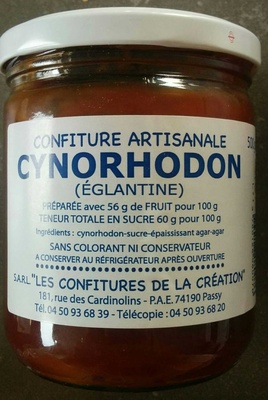Confiture de cynorhodon - Les Confitures de la Création - 500 g
This product page is not complete. You can help to complete it by editing it and adding more data from the photos we have, or by taking more photos using the app for Android or iPhone/iPad. Thank you!
×
Barcode: 3760128080076 (EAN / EAN-13)
Common name: Confiture d'églantine
Quantity: 500 g
Brands: Les Confitures de la Création
Categories: Plant-based foods and beverages, Plant-based foods, Fruits and vegetables based foods, Breakfasts, Spreads, Fruits based foods, Plant-based spreads, Sweet spreads, Fruit and vegetable preserves, Jams, Rosehip jams
Labels, certifications, awards: No preservatives, No colorings, No dyes or preservatives
Countries where sold: France
Matching with your preferences
Environment
Carbon footprint
Packaging
Transportation
Report a problem
Data sources
Product added on by cbenz
Last edit of product page on by packbot.
Product page also edited by beniben, kiliweb, moon-rabbit, openfoodfacts-contributors, segundo, yuka.CL5tZu6BE8M5BcXQ1qgG2hznTO7nDNpoRiUfoQ, yuka.V3E5YUdhQTRxdE1JdWZNRjFESGUzTmRxNnJMelJuNllHZVk4SVE9PQ.










